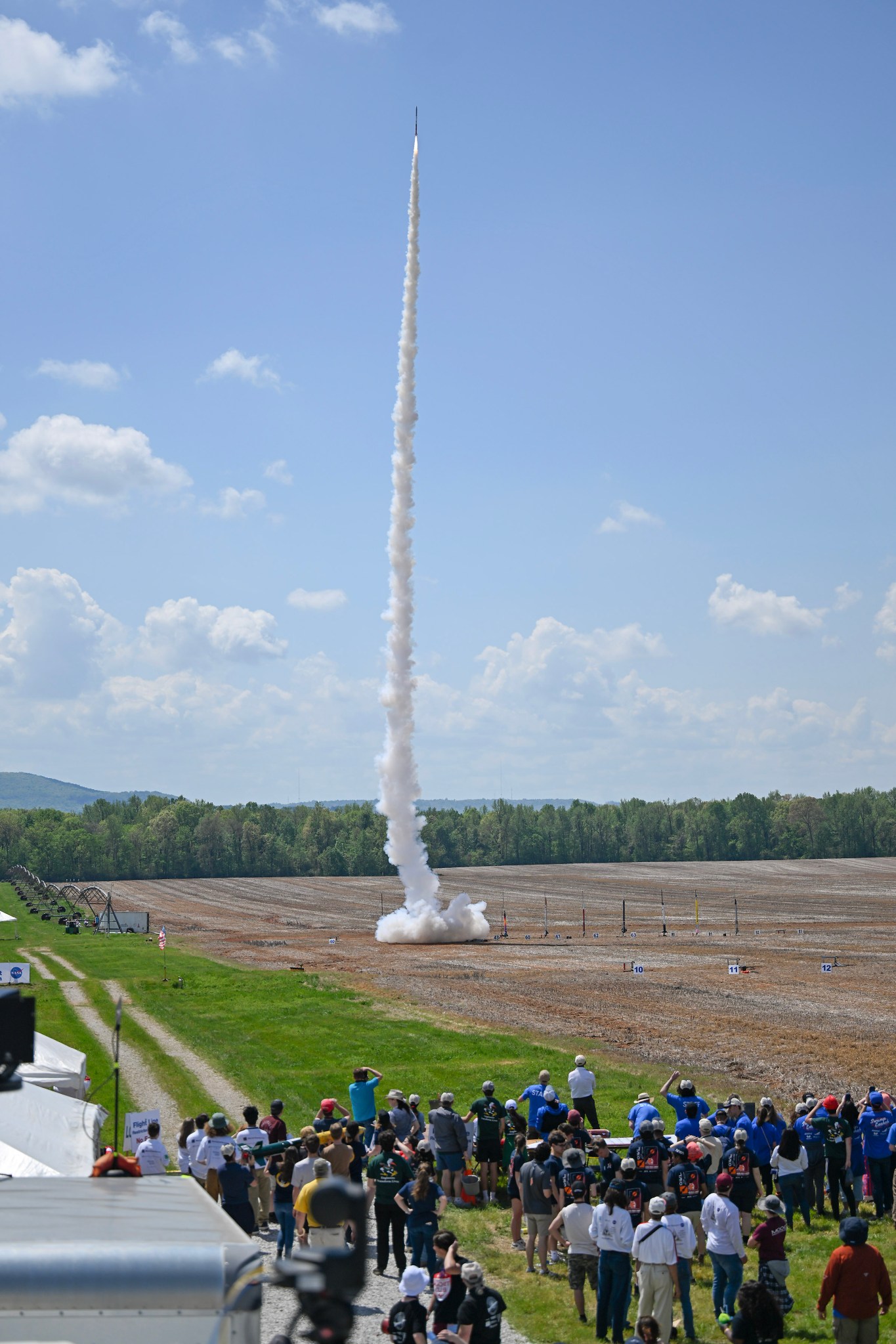HUNTSVILLE — It actually IS rocket science!
Student Launch is a 9-month long challenge that tasks student teams from across the U.S. to design, build, test, and launch a high-powered rocket carrying a scientific or engineering payload.
It is a hands-on, research-based, engineering activity and culminates each year with a final launch in Huntsville. The activity offers multiple challenges reaching a broad audience colleges and universities as well as middle and high school aged students across the nation.
The annual competition – one of NASA’s nine Artemis Student Challenges – requires middle/high school and college/university students to design, build, and fly a high-powered amateur rocket and scientific payload.

Seventy teams from 24 states and Puerto Rico are participating this year with 53 teams expected to launch in-person. Any team not traveling to Huntsville may conduct final test flights at a home launch field.
NASA also welcomes the return of the Rocket Fair today from 3-6 p.m. at the Von Braun Center East Hall in downtown Huntsville. This event is free and open to the public as students display their rockets and answer questions from the media and NASA engineers.
The activities culminate Saturday – Launch Day.
Bragg Farms in Toney is converted into a Mission Control when rockets lift off. Gates open at 7 a.m. and the event runs from 8:30 a.m. to approximately 2:30 p.m. (or until the last rocket launch). Lawn chairs are recommended. Pets are not permitted. Live streaming will begin at 8:20 on NASA Marshall YouTube and Student Launch Facebook.
Winners of the student launch will be announced June 7 during a virtual awards ceremony once all teams’ flight data has been verified.
Each year NASA implements a new payload challenge to reflect relevant missions. This year’s payload challenge is inspired by the Artemis missions, which seek to land the first woman and first person of color on the Moon.
Students will design a SAIL (STEMnaut Atmosphere Independent Lander) payload. It must deploy mid-air, safely return to the ground without using a parachute, and be reusable to launch the same day without repairs or modifications. The payload will contain a crew of four STEMnauts, non-living objects representing astronauts. Students will choose metrics to determine the endurance of the lander, considering acceptable descent and landing parameters.

University/college teams are required to meet the 2024 payload requirements set by NASA, but middle/high school teams have the option to tackle the same challenge or design their own payload experiment.
Student teams will undergo detailed reviews by NASA personnel to ensure the safety and feasibility of their rocket and payload designs. All teams must declare their rocket’s targeted altitude for final launch day during a preliminary design review. The team closest to their target will win the Altitude Award, just one of multiple awards presented to deserving teams at the end of the competition. Other awards include overall winner, vehicle design, experiment design, social media presence, and more.
In addition to the engineering and science side of the competition, students also participate in outreach efforts such as engaging with local schools and maintaining effective social media accounts. Student Launch is an all-encompassing challenge and aims to prepare the next generation for the professional world of space exploration.
The competition is managed by Marshall’s Office of STEM Engagement. Additional funding and support are provided by NASA’s OSTEM via the Next Gen STEM project, NASA’s Space Operations Mission Directorate, Northrup Grumman, National Space Club Huntsville, American Institute of Aeronautics and Astronautics, National Association of Rocketry, Relativity Space, and Bastion Technologies.
Don’t miss out! Subscribe to our email newsletter to have all our smart stories delivered to your inbox.


